The Forgotten Practice of Simple Devotion to the Three Jewels: Buddha Dharma and Sangha, or Teacher, Yidam and Dakini

Why is devotion considered the “essence of the path” in Buddhism? Why does every Buddhist practice, without exception begin with Taking Refuge in the Three Jewels, the objects of our devotion? Why do even the most senior teachers still practice prostration and devotion? Why is devotion the first of the four foundations of Buddhism, and how can we develop it? We answer these questions in this short feature, with insights from various teachers.
Dilgo Khyentse Rinpoche in The Excellent Path to Enlightenment wrote:
“Devotion is the essence of the path.”

Does Devotion mean Worship? No.
What does that mean? Are we worshiping something?
The root of the word Devotion is the latin word devovere meaning “to vow” — to devote oneself to. Vowing and offering respect is not worship, as often understood in various spiritual paths. Buddhism is different in this respect.
In Buddhism we take Refuge in Buddha, Dharma, and Sangha, the three Jewels, because we devote ourselves to Buddha’s teachings. We vow to act courageously, with compassion and wisdom. We vow to try to observe the eightfold path of Shakyamuni Buddha, the Teacher and his subsequent teachings.
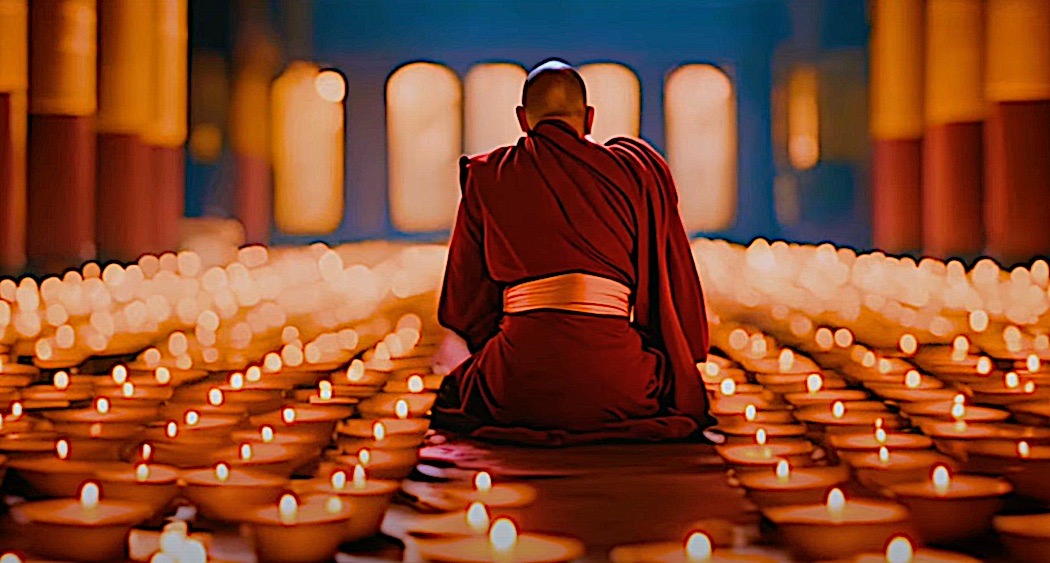
The Role of Faith and Devotion
Why is devotion so important? Padmasambhava explained:
“I am never far from those with faith, or even from those without it, though they do not see me. My children will always, always, be protected by my compassion.”
Those with this faith show it with devotion, not worship. Devotion is not the same thing as “worship.” We do not bow to a deity. We are vowing to follow the teachings.
Garchen Rinpoche explained devotion this way:
“The single most important source of blessings is devotion.”
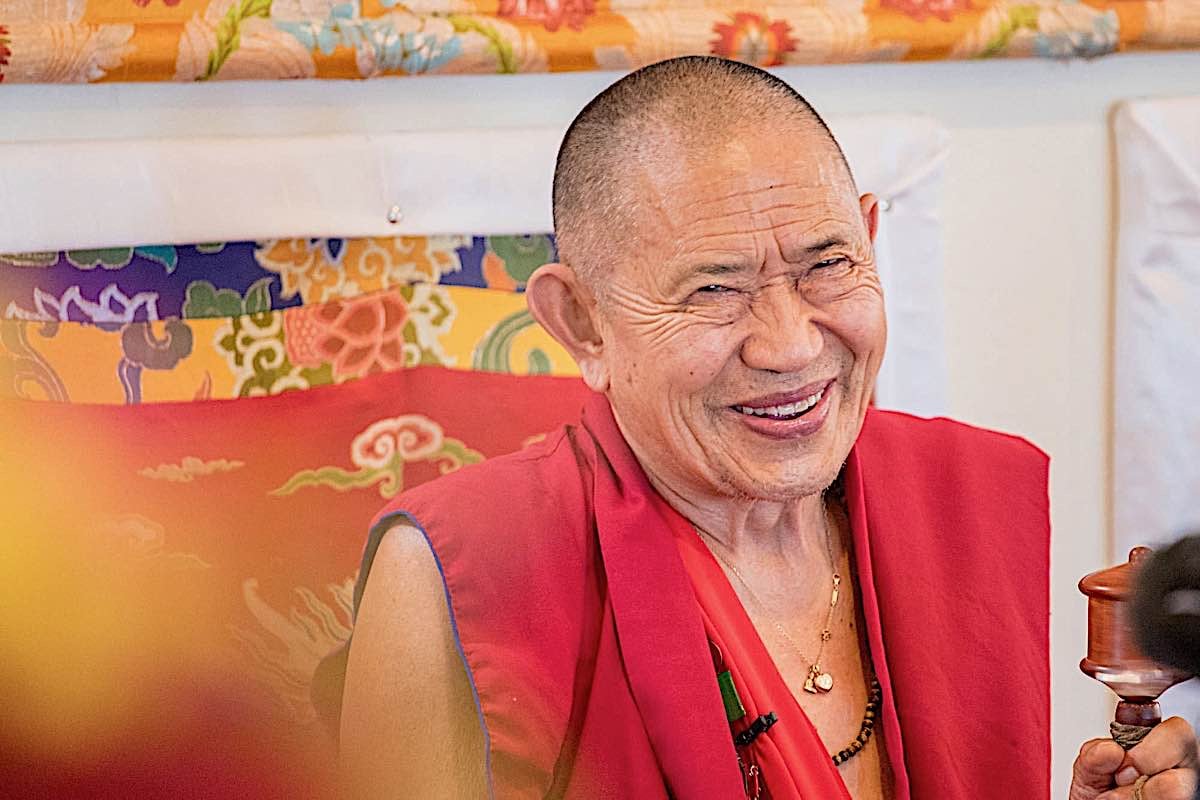
In the context of Buddhism, devotion means Taking Refuge and showing respect and remaining devoted to Dharma. It does not mean worship. It also means inspiring devotion. Often, as we repeat a practice thousands of times, we tend to lose our excitement.
What we might forget, is that jewels never lose their sparkle, never tarnish. The Three Jewels only need the spark of inspiration to return to deep devotion.
Devotion is the Heart of Dharma
Devotion is the “heart of Dharma.” This is why, devotional practice has always been part of the “Spread the Dharma mission” of Buddha Weekly, and is the clear, precise mission of our new musical band, the 3 Gems Band (Please check out their amazing new Youtube Channel with beautiful devotional music videos!). Their first album of beautiful devotional Buddhist songs and mantras is meant to inspire us to new joy, faith and devotion.
Devotion takes many forms. The most important, daily indispensable practices for every Buddhist is to take Refuge in the Three Jewels at least once a day.
The Four Main Foundation Practices
If we’re serious students, we might do full foundation practices, which include taking refuge and prostrating 100,000 times. If we’re fortunate, and have a teacher, we likely have a daily practice, which, of course, begins with Taking Refuge in the Three Jewels.

Even for those without a teacher, devotion is still the first, and most important, practice for most of us. If we have no teacher, we might look for our inspiration in books and online.
It is for this reason we have two ongoing projects at Buddha Weekly, including our original inspirational Sanskrit group Buddha Weekly band, we now have our joyful devotional and inspiration musical band 3Gems.
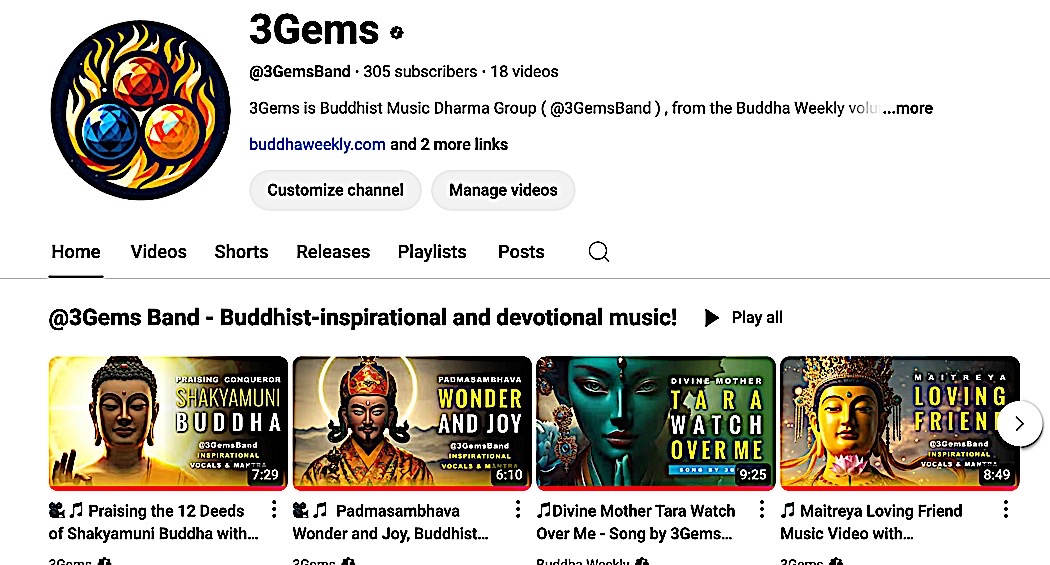
3 Gems band, in particular are focused on uplifting, inspiring devotional songs. The goal is to bring joy, devotion, bliss, happiness, a moment of peace and inspiration. Their beautiful inspiration music is available for streaming:
Inspiration leads to Devotion from the Heart
Music is the obvious way, together with pictures and inspiring words, to develop devotion and faith. Even if our main practice is quiet sitting meditation, or breath contemplation, or deep and complex visualization yogas, devotion remains the main inspiration to go deeper in practice.
Praising Shakyamuni Buddha and his 12 Deeds is a practice of devotion, here turned into a beautiful inspiration song by @3GemsBand:
On our channel we also explore other ways to develop a practice, in some cases without a teacher. Until you find a teacher, you can certainly still practice any puja, which are, strictly speaking, devotional and offering. Even a very esoteric practice, that might be impossible to understand without a teacher, can at least be celebrated with a devotional puja.
In Sakya lineage, one full month is dedicated to Vajrakilaya Puja. Beautiful 20 minute documentary interviewing His Holiness Sakya Trizin, Sakya Trichen and others.
On Full Month of Devotion Each Year!
For, instance, in the Sakya Tibetan tradition, the seventh lunar month is celebrated with a full one-month puja honouring Vajrakilaya — every single year. Vajrakilaya is the great Heruka aspect of Vajrasattva. For that entire month, the puja is celebrated non stop with offerings, prayers, mantras and Cham dance.
This is supreme devotion. We, the public watch and feel devotion and joy, even if we don’t have Vajrakilaya empowerments. This is puja, devotion and offering.
Or to take another example, in multiple Buddhist traditions, lunar New Year, is celebrated with 15 days of devotion — not only puja, but long lines of cars and people waiting to light an incense stick or butter lamp at temple. We celebrate those first 15 days of the year with devotional practices, puja and offerings.
Without exception, no matter what our practice, whether we just quietly sit and observe our breath, or recite sutra, or chant mantras, or even if we practice advanced highest yogas, we always, always, always begin with devotion.
Refuge in the Three Jewels is Always First
With refuge in the Three Jewels or Three Gems of Buddha, Dharma and Sangha, or Teacher, Yidam and Dakini. Always. If we skip this important devotion, we are not practicing Buddhism.
This is why, regardless of our teacher or lineage, when we request teachings from a teacher, the first recommendation is always foundation practices. There are four, beginning with Devotion.
His Holiness the Dalai Lama speaks often on the topic of Devotion and Faith. He said:
“Faith dispels doubt and hesitation, it liberates you from suffering and delivers you to the city of peace and happiness.”
Four “Attitudes” of Four Foundations
The four foundation practices recommended by teachers have a purpose. It’s not just an arbitrary instruction to fulfill the magical number of 100,000 for each of the four.
First Attitude: Devotion and Treasuring Precious Human Birth
Repeating Refuge, over and over, instills in us the four proper attitudes necessary for practice. Even if we think we already have them, it’s helpful to reinforce the attitudes.
These are usually taught first, to recognize the rarity of the opportunity to practice the Dharma. We recognize this precious opportunity, this precious human life, by showing our devotion and faith and refuge in the three Jewels.
Second Attitude: Bodhichitta and Compassion
The second attitude is Bodhichitta attitude. This arises from our understanding that all beings are suffering, all beings have Buddha Nature, all beings are precious, and all beings are deserving of Enlightenment. This can also be called compassion.
Third Attitude: Wisdom
The third attitude is wisdom, including an understanding of the impermanence of life, and thus how precious it is. Linked to that is to develop an understanding of Dependent arising. With this understanding, we realize that all things arise and exist in dependence upon other things. With this understanding, we develop compassion for all beings, and an understanding of karma, cause and effect.
Four Attitude: Reliance
The fourth attitude is the reliance. We rely on the Guide or Teacher, who is Buddha, and also our Guru or Spiritual Guide. We rely on the Dharma, which are the teachings. We rely on the Sangha for our support.
The four foundations reinforce the four attitudes, which are the attitudes of a Mahayana Buddhist. In some traditions, especially if impatient to request empowerments for an exotic practice from our teacher, we might be assigned 100,000 of each type of foundation or more. Or, if we’re not practicing so intensely, we might just accumulate the 100,000 in our lifetime.
Why 100,000 Repetitions?
Why bother? Why 100,000. In some ways it’s symbolic. It basically means — a lot, and for the rest of your life.That’s the practice: Devotion, Bodhichitta, Wisdom and Compassion which align with the four attitudes and foundations. These four teach us everything.
Devotion teaches us to take Refuge in the Three Jewels. Bodhichitta teaches us all-important Buddha Nature. Compassion teaches us to offer generosity and kindness to all beings, which helps us fulfill our Bodhichitta mission. And Wisdom, of course, is Dharma. It’s what we’re seeking. But we come to realize that Wisdom is not only a truth, but the synthesis of the other three as well: devotion, Bodhichitta and Compassion. These are equally wisdom.
Do the foundations ever stop being relevant? The answer is emphatically no. We still see the Dalai Lama, His Holiness Sakya Trizin, and all the great teachers still lead public Puja every week and month for life.
What is Puja?
What are Puja? Puja expresses all four foundations and attitudes: devotion, Bodhichitta or compassion, wisdom and reliance. Every Buddhist Puja, even in the shortest form, begins with Refuge in the Three Jewels, expresses Bodhichitta intention and compassion, makes offerings of generosity devotion teaching good conduct and wisdom, and asks for our teachers and the Dharma to continue as our inspiration. And, of these, of the all-important four, we always begin with devotion.
In Some Traditions Devotion is the Entire Practice
In different traditions, for example Pure land traditions, the entire practice is devotion to Amitabha. Another tradition offers devotion to the Lotus Sutra, which, of course, is the second of the three Jewels, the Dharma.
Every day, if we have a Buddhist practice of any kind, even if we mostly just sit and meditate, we usually start with Refuge in the Three Jewels. This is devotion. For many people, this is the entire practice. The devotion becomes our mindfulness practice, our focus, our understanding of Shunyata, and our teaching. For others, it’s the prelude to deeper practices. But, it is always part of daily practice.
Devotion is the foundation of Advanced Practices
For those who have long ago completed their Foundation practices, Devotion may no longer be top of mind — but it remains undeniably the most important Buddhist practice. It is literally the foundation of the more advanced practices we learn over the years.
As with any practice that we take for granted due to repeated, daily use, the key to developing passion and joy in our practice is to inspire the simple joy of devotion in the Three Jewels.
This is the mission of our new volunteer music group the 3 Gems Band. We hope you’ll join them on their joyful and blissful journey. Please support them by subscribing to their channel and social media as a vote for the pure joy of devotion to the Three Jewels.
1 thought on “The Forgotten Practice of Simple Devotion to the Three Jewels: Buddha Dharma and Sangha, or Teacher, Yidam and Dakini”
Leave a Comment
More articles by this author
Search
Latest Features
Please support the "Spread the Dharma" mission as one of our heroic Dharma Supporting Members, or with a one-time donation.
Please Help Support the “Spread the Dharma” Mission!

Be a part of the noble mission as a supporting member or a patron, or a volunteer contributor of content.
The power of Dharma to help sentient beings, in part, lies in ensuring access to Buddha’s precious Dharma — the mission of Buddha Weekly. We can’t do it without you!
A non-profit association since 2007, Buddha Weekly published many feature articles, videos, and, podcasts. Please consider supporting the mission to preserve and “Spread the Dharma." Your support as either a patron or a supporting member helps defray the high costs of producing quality Dharma content. Thank you! Learn more here, or become one of our super karma heroes on Patreon.
Lee Kane
Author | Buddha Weekly
Lee Kane is the editor of Buddha Weekly, since 2007. His main focuses as a writer are mindfulness techniques, meditation, Dharma and Sutra commentaries, Buddhist practices, international perspectives and traditions, Vajrayana, Mahayana, Zen. He also covers various events.
Lee also contributes as a writer to various other online magazines and blogs.

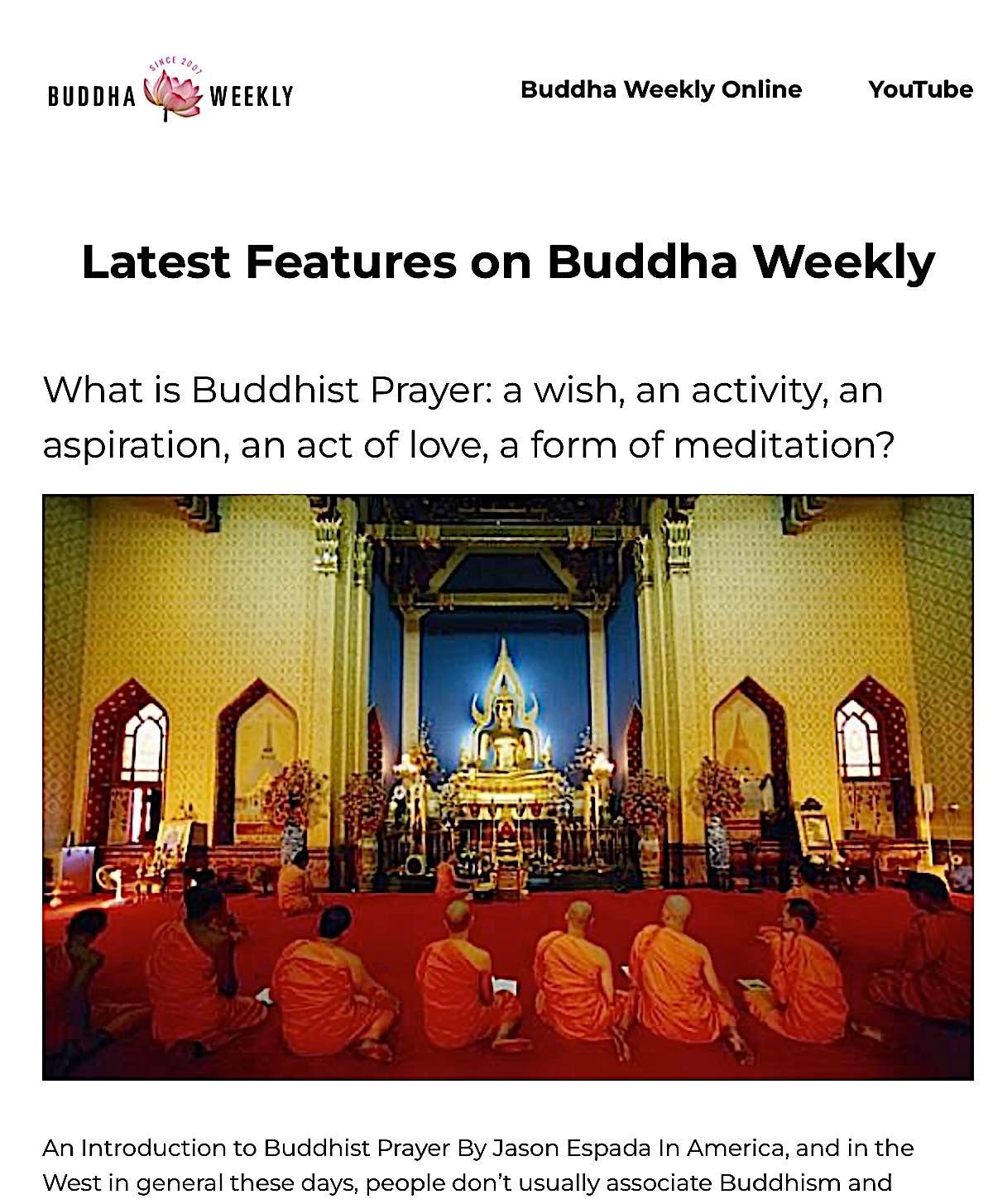











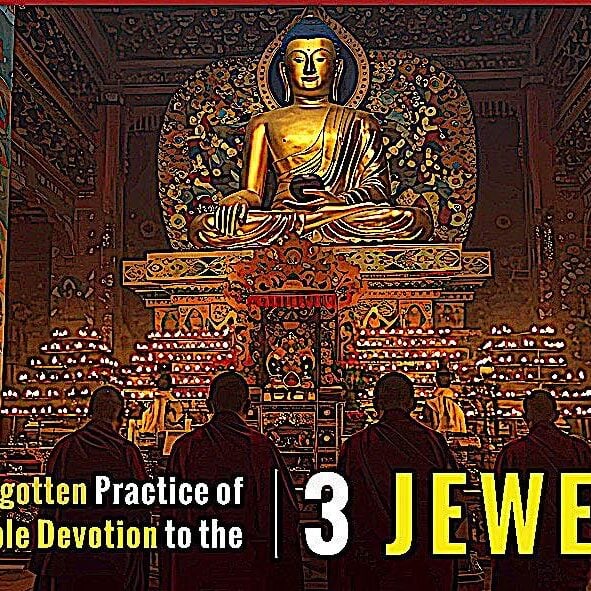





Countless Repetitions
It is by countless repetitions
That all this mess of suffering
Has come about
It is by countless repetitions
That we recognise some of the facts
Today
It is by countless repetitions
That we govern the creation
Of what is to come
(Karma Gyenpa Gyatso 2002)